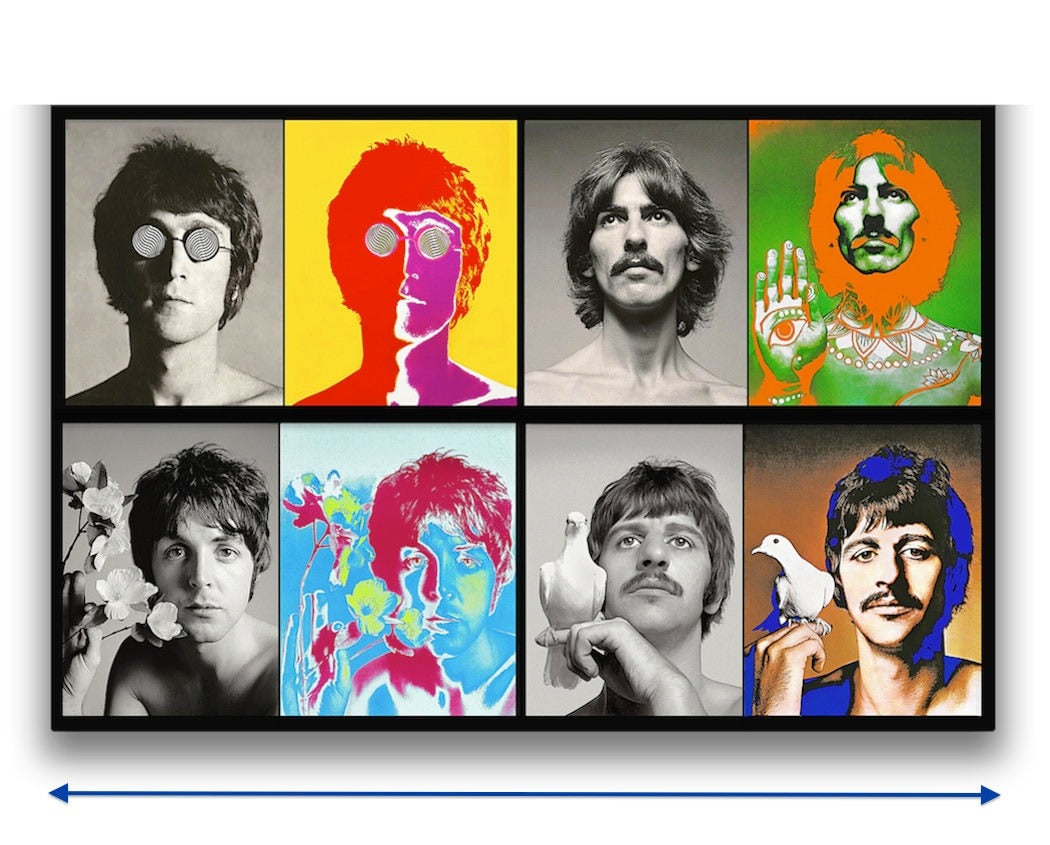
Richard Avedon Beatles
- Introduction
- Early Life and Career of Richard Avedon
-
Avedon's Iconic Beatles Portraits
- Capturing the Essence of the Beatles
- Behind-the-Scenes Stories
-
Impact of Avedon's Work on Music and Photography
- Redefining Music Photography
- Cultural Significance
-
The Art of Portraiture and Expression
- Avedon's Unique Style
- Communicating Emotions through Portraits
-
Collaborations Beyond the Beatles
- Other Musical Icons Photographed by Avedon
- Diverse Portfolio and Versatility
-
Evolution of Avedon's Photography Techniques
- Innovations in Lighting and Composition
- Pioneering Fashion and Celebrity Photography
-
Critique and Controversy
- Pushing Boundaries and Challenging Norms
- Navigating Controversial Themes
-
Legacy and Lasting Inspirations
- Influence on Modern Photographers
- Avedon's Enduring Impact
- Conclusion
Richard Avedon Beatles: Capturing Music and Emotions
 From the heart of the 1960s cultural revolution emerged a legendary collaboration that immortalized the iconic spirit of both music and photography. Richard Avedon, a trailblazing photographer known for his captivating portraiture, intersected paths with none other than the world-famous rock band, the Beatles. In this exploration, we journey through the life of Richard Avedon, the profound impact of his Beatles portraits, his innovative photography techniques, and his lasting legacy on the realm of artistic expression.
From the heart of the 1960s cultural revolution emerged a legendary collaboration that immortalized the iconic spirit of both music and photography. Richard Avedon, a trailblazing photographer known for his captivating portraiture, intersected paths with none other than the world-famous rock band, the Beatles. In this exploration, we journey through the life of Richard Avedon, the profound impact of his Beatles portraits, his innovative photography techniques, and his lasting legacy on the realm of artistic expression.
Early Life and Career of Richard Avedon
Born in 1923, Richard Avedon developed a fascination for the visual world at a young age. His career began in earnest when he joined the United States Merchant Marine during World War II, where he took identification photographs of his fellow soldiers. After the war, Avedon pursued his passion for fashion photography, revolutionizing the field with his dynamic and evocative compositions.
Avedon's Iconic Beatles Portraits
Capturing the Essence of the Beatles
In 1967, Avedon was granted an unprecedented four-hour photoshoot with the Beatles. His ability to capture the essence of each band member in a single frame showcased his mastery of storytelling through images. The photographs went beyond mere poses, revealing the individual personalities that contributed to the Beatles' collective charisma.
Behind-the-Scenes Stories
Peering behind the lens, we uncover stories of camaraderie and collaboration that transpired during the photoshoot. Avedon's skillful direction combined with the Beatles' natural chemistry resulted in candid shots that felt both intimate and larger-than-life.
Impact of Avedon's Work on Music and Photography
Redefining Music Photography
Avedon's Beatles portraits marked a turning point in the way music artists were visually portrayed. He discarded the conventional formula and introduced a new level of depth to music photography. The images spoke of the Beatles' journey, struggles, and triumphs, resonating with fans on a profound level.
Cultural Significance
The photographs transcended their role as promotional materials and became cultural artifacts. Avedon's images mirrored the societal shifts of the 1960s and encapsulated the spirit of rebellion, freedom, and creative expression that defined the era.
The Art of Portraiture and Expression
Avedon's Unique Style
Avedon's style emphasized stark backgrounds, minimalistic settings, and direct engagement with the subject. This stripped-down approach compelled his subjects, including the Beatles, to convey raw emotions, making the photographs more than just pictures—they became windows into the soul.
Communicating Emotions through Portraits
Through his lens, Avedon harnessed the power of expressions. The Beatles' portraits were not mere snapshots but revelations of their inner selves. A raised eyebrow, a playful smile—each detail revealed layers of complexity, inviting viewers to explore the depths of human emotion.
Collaborations Beyond the Beatles
Other Musical Icons Photographed by Avedon
Avedon's brilliance extended beyond the Beatles. He captured the essence of other musical luminaries like Bob Dylan and Janis Joplin. His ability to evoke vulnerability and strength simultaneously made his photographs a mirror to the artists' souls.
Diverse Portfolio and Versatility
Beyond music, Avedon's portfolio encompassed fashion, politics, and social issues. His wide-ranging subjects demonstrated his versatility, solidifying his status as a master storyteller who could convey narratives through the lens of his camera.
Evolution of Avedon's Photography Techniques
Innovations in Lighting and Composition
Avedon's meticulous approach to lighting and composition set him apart. His innovative use of natural light and stark contrasts created images that were both visually striking and emotionally resonant.
Pioneering Fashion and Celebrity Photography
Avedon's influence on fashion and celebrity photography cannot be overstated. He challenged conventions, introducing movement and dynamism into static images, forever changing how we perceive the intersection of art, fashion, and culture.
Critique and Controversy
Pushing Boundaries and Challenging Norms
Avedon's work wasn't without its share of controversy. His willingness to push boundaries often ignited discussions about the role of photography in shaping societal norms. His images of Beatles, while celebrated, also sparked debates about the authenticity of celebrity personas.
Navigating Controversial Themes
Avedon's photographs sometimes delved into provocative themes, forcing viewers to confront uncomfortable truths. His fearless exploration of vulnerability, mortality, and identity made him a provocateur as much as a photographer.
Legacy and Lasting Inspirations
Influence on Modern Photographers
Avedon's influence reverberates through generations of photographers. His unconventional approach to portraiture inspired a departure from traditional norms, encouraging contemporary artists to seek authenticity and emotion in their work.
Avedon's Enduring Impact
The Beatles portraits are an enduring testament to Avedon's artistry and the cultural legacy he left behind. They continue to captivate audiences, inviting us to explore not just the images themselves, but the stories and emotions they encapsulate.
Conclusion
In the tapestry of art history, the meeting of Richard Avedon and the Beatles forms a brilliant, unforgettable thread. Avedon's ability to freeze moments of time and infuse them with meaning mirrors the timeless melodies created by the Beatles. Both artists dared to challenge norms, to innovate, and to touch the essence of what it means to be human. As we revisit Avedon's portraits, we are reminded that true artistry isn't confined by time—it transcends it.
FAQs about Richard Avedon and His Beatles Portraits
-
Who was Richard Avedon, and what was his significance in the world of photography?
Richard Avedon was a renowned American photographer known for his iconic portraits and innovative approach to photography. His work significantly impacted the realms of fashion, celebrity, and fine art photography.
-
How did Avedon's portraits of the Beatles differ from traditional music photography?
Avedon's portraits went beyond the surface, capturing the Beatles' personalities and emotions. He introduced a narrative dimension that revolutionized music photography, making it more introspective and evocative.
-
What role did Avedon's photography play in the cultural context of the 1960s?
Avedon's photographs captured the spirit of the 1960s cultural revolution. They mirrored the era's emphasis on creative expression, individuality, and societal change.
-
Why are Avedon's portraits of the Beatles considered controversial?
While celebrated, Avedon's portraits also sparked discussions about authenticity and the portrayal of celebrity personas. Some argued that the portraits revealed more about Avedon's perspective than the Beatles' true selves.
-
How has Avedon's work influenced modern photographers?
Avedon's emphasis on authenticity and emotion has inspired modern photographers to explore deeper connections with their subjects. His innovative techniques continue to resonate in contemporary photography.


